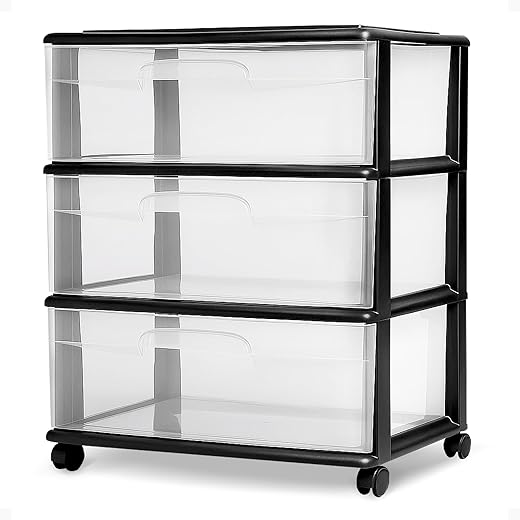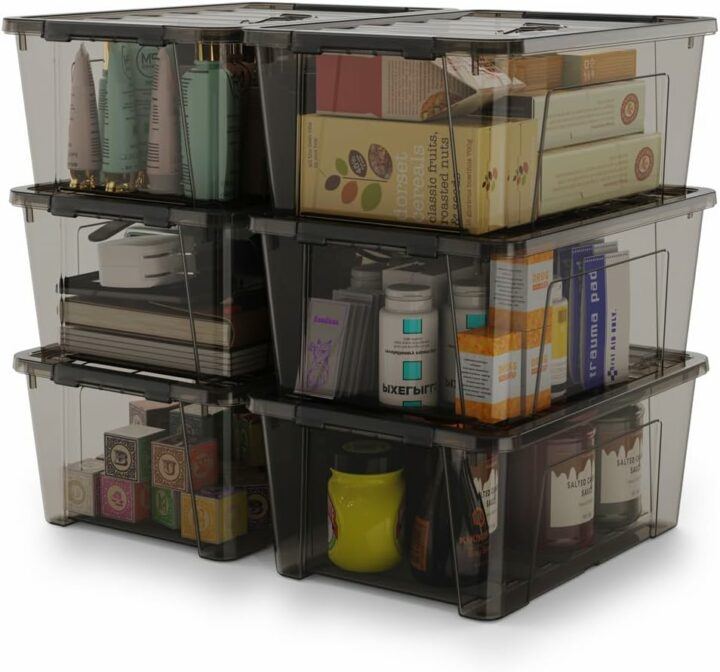The step-by-step guide “How to choose the right size of stackable storage bins” is designed to help individuals in selecting the appropriate size of stackable storage bins for their needs. Stackable storage bins are versatile and practical storage solutions that allow for efficient organization and maximization of space. By following this guide, readers will learn how to determine the correct size of stackable storage bins based on their specific requirements and space limitations. The guide covers key considerations such as available space, intended use, and dimensions of the items to be stored. With this information, individuals will be equipped to make informed decisions and choose the right size of stackable storage bins to meet their storage needs effectively.
Table of Contents
Popular Storage Solutions for Organizing



Understand your storage needs
To understand your storage needs before choosing the right size of stackable storage bins, begin by assessing the items you plan to store. Take a thorough inventory of the belongings you want to organize and determine their quantity. This step is crucial in estimating the total storage space required. By knowing the exact number of items you need to store, you can make an informed decision about the appropriate size of stackable storage bins to purchase.
Once you have a clear idea of the quantity of items you have, measure the dimensions of the largest items in your inventory. Consider their height, width, and depth to ensure they will fit comfortably inside the stackable storage bins. Additionally, take into account any irregularly shaped items or items with protruding parts, as they may require larger bins or specialized storage solutions. By carefully evaluating the size and shape of your belongings, you can select stackable storage bins that provide adequate space for all your items while optimizing your storage area.



Measure the available space
To measure the available storage space for the stackable storage bins, start by taking the width measurement of the area. Use a tape measure or ruler to determine the distance across the space from one side to the other. Write down this measurement to refer to later.
Next, measure the height of the storage space. Again, use a tape measure or ruler to determine the vertical distance from the floor or bottom of the area to the top. Write down this measurement as well.
Lastly, measure the depth of the storage space. This refers to the distance from the front of the area to the back. Use a tape measure or ruler to determine this measurement and make sure to record it accurately.
By taking these three measurements – width, height, and depth – you will have a clear understanding of the available space where you plan to use the stackable storage bins. This information will help you choose bins that fit perfectly and maximize the storage capacity in the designated area.



Consider weight and load capacity
Consider the weight and load capacity of the items you plan to store. Before choosing stackable storage bins, it is important to assess the weight of your items and ensure that the bins you select can support that weight without compromising their structural integrity. To do this, carefully examine the weight capacity specifications provided by the manufacturer for each bin option. These specifications are usually indicated in pounds or kilograms, indicating the maximum weight that the bin can safely handle.
To make an informed decision, gather information about the weight of your items and compare it with the weight capacities of the different stackable storage bins available. If your items are particularly heavy, it is advisable to choose bins with higher weight capacities to prevent any risk of the bins breaking or collapsing under the load. By taking the weight and load capacity into account, you can ensure that the storage bins you choose are suitable for your specific storage needs and can safely accommodate the weight of your items.



Evaluate stacking capability
To evaluate the stacking capability of the storage bins you are considering, it is crucial to check if they have the ability to securely stack on top of each other. This is important for two reasons: maximizing storage space and ensuring stability. When assessing the stacking capability, look for specific features that contribute to safe and stable stacking.
Firstly, check if the bins have interlocking lids. These lids are designed to securely connect with each other when stacked, preventing them from easily coming apart. This feature not only ensures stability but also provides added protection to the items stored inside the bins. For example, if you are storing delicate items like glassware or electronics, interlocking lids will prevent any accidental opening or shifting of the bins.
Secondly, look for grooves or ridges on the sides of the bins. These grooves are designed to fit securely into corresponding ridges on the bottom of another bin, creating a stable stacking configuration. This helps to prevent the bins from sliding or toppling over when stacked. For instance, if you are storing heavy items like books or tools, the grooves will help keep the stacked bins in place, reducing the risk of accidents or damage.
By carefully evaluating the stacking capability of the storage bins and considering features such as interlocking lids or grooves, you can ensure that they will securely stack on top of each other. This will not only maximize your storage space but also provide stability and peace of mind, knowing that your belongings are safely stored.



Consider future expansion
Think about the possibility of future expansion or additions to your storage needs. When choosing storage bins, it is important to consider the long-term requirements of your space. If you anticipate needing more storage space in the future, it may be wise to choose stackable storage bins. These bins are designed to be easily added or integrated with additional bins of the same size or design.
To ensure future expansion, first evaluate your current storage needs and estimate how much additional space you may require in the future. Consider factors such as the growth of your business, seasonal fluctuations in inventory, or any upcoming projects that may require additional storage. Once you have a rough idea of your future storage needs, choose stackable storage bins that can accommodate your expanding requirements.
When selecting stackable storage bins, look for ones that are designed to interlock securely. This will prevent bins from toppling over and ensure stability when stacking them. Additionally, opt for bins that have a uniform size and shape, as this will allow for easy integration of new bins in the future. It is also helpful to choose bins with clear labeling options, enabling you to easily identify the contents of each bin.
By considering the possibility of future expansion and choosing stackable storage bins that can be easily added or integrated, you can ensure that your storage needs are met both now and in the future. This proactive approach will save you time, money, and effort, allowing you to efficiently organize and expand your storage space as needed.


Making the right decision
In conclusion, selecting the appropriate size of stackable storage bins requires a thorough understanding of your storage requirements, careful measurement of available space, consideration of weight and load capacity, assessment of stacking capability, and anticipation of future expansion. By following these guidelines, you can confidently make an informed decision and maximize the effectiveness of your storage solutions.
Necessary Equipment






Organization made easy
Step-by-Step Guide to Utilizing Stackable Storage Bins
- Start by selecting the right size and type of stackable storage bins for your needs. Consider the dimensions of the space you have available and the items you plan to store
- Sort and categorize your belongings before placing them in the bins. This will make it easier to find specific items later on and maximize the use of each bin
- Label each bin clearly to identify its contents. This will save you time and effort when searching for specific items, especially if you have multiple bins stacked on top of each other
- Stack the bins in a stable and secure manner. Start with the heaviest and sturdiest bins at the bottom, ensuring that the weight is evenly distributed. Avoid overloading the bins or stacking them too high to prevent accidents or damage
- Make use of any additional features or accessories that come with the stackable storage bins. For example, some bins have interlocking mechanisms or are designed to be wall-mounted, which can further optimize your storage space

